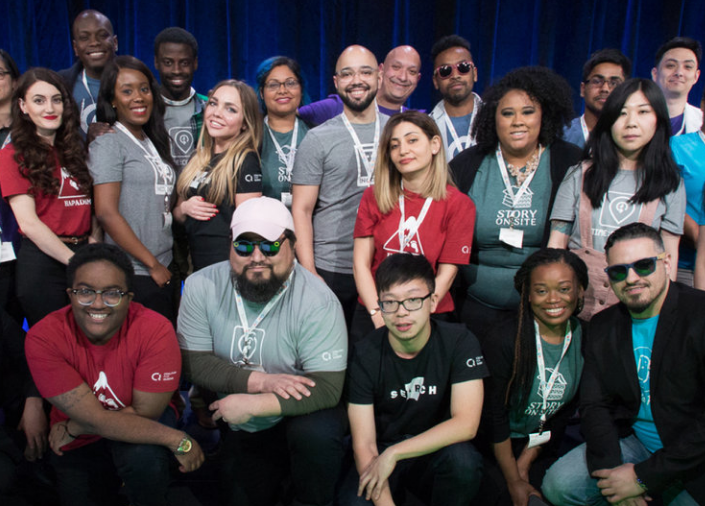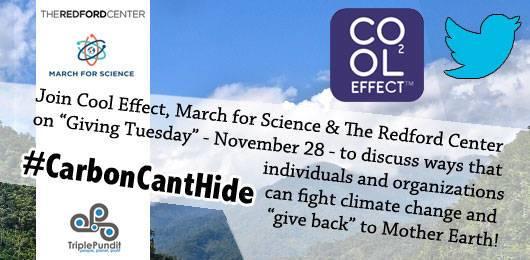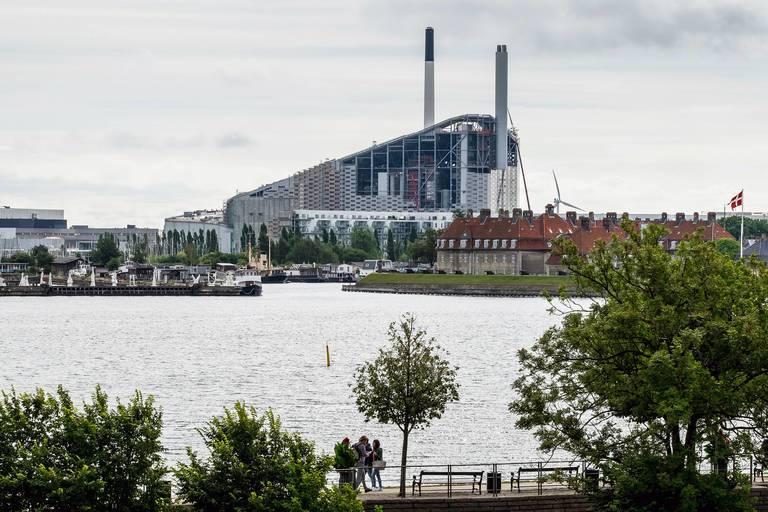As Demand for Tech Skills Surges, Is College Really Right for All?


A Georgetown University study suggests 65 percent of all jobs in the U.S. will require more than a high school education by 2020. Hence it is clear that much work needs to be done to narrow the educational achievement and economic opportunity gaps in the U.S. In addition, there is the sobering statistic that only 9 percent of low-income students earn a Bachelor’s degree by the age of 24, in contrast to 77 percent of their higher-income peers.
The question remains - is college right for everyone? Education leaders recently met during the recent Dreamforce conference in San Francisco to talk about how post-secondary learning could and should evolve this century – including one organization that is disrupting the traditional academic model.
The challenge is one that Dr. Byron Breland, President of San Jose Community College (SJCC), faces day-in and day-out. “Our community college of 10,000 students is critical for the other side of Silicon Valley,” Dr. Breland told an audience during the Dreamforce Idea Forum. “Exposure to community colleges and non-traditional schools is so important to raise awareness and expand access.”
Dr. Breland was quick to point out the importance community colleges have in students’ upward mobility. Graduation from SJCC hovers between 20 to 25 percent, but he noted that ratio hardly tells the whole story. After all, students may enroll for a semester, only to drop out shortly after because that one class may have helped them score a higher-paying job. “Success isn't just about finishing the degree, but overcoming obstacles,” said Dr. Breland.
Other students simply face too many challenge in their daily life to push forward on their education goals. “Some of our students are a flat tire away from dropping out,” Dr. Breland added.
Meanwhile, we keep hearing about how more and more jobs will require some coding skills; and of course, the data show that jobs in STEM (science, technology, engineering and math) can provide that ticket to a stable income and at minimum, a comfortable middle-class lifestyle. The current four-year academic model, however, is not practical for many students. Private schools also impose barriers because of their hefty price tag. “We hear we don't have enough coders," continued Dr. Breland, “but such schools cost up to $20,000, so partnerships are important.”
One answer to this ongoing dilemma is in the westernmost neighborhood of Queens, New York City.
C4Q (Coalition for Queens), is disrupting technology education for the better. The non-profit in Long Island City offers an intensive 10-month coding program tailored for low-income students as well as others who come from underserved communities. In addition, C4Q partners with various technology companies, which in turn has allowed graduates to find jobs at companies such as Kickstarter, IBM and Capital One.
Students who have graduated from C4Q’s program earned an average of $18,000 a year before they enrolled. After graduation, their annual income averages about $85,000.
Jukay Hsu, a U.S. Army veteran who is founder and CEO of C4Q, urged the business community and academic sector to embark on similar solutions to expand educational opportunities for those who can benefit the most.
“Working with companies and going beyond strict requirements for degrees are important to expand STEM opportunities to more students,” Hsu explained to a Dreamforce audience, “and we need to create alternatives to the traditional college track if we are going to extend access to education.”
During the C4Q track, the program’s current 144 students have the opportunity to learn web development, iOS or Android. But the courses are not just focused on coding; the way in which the classes are designed serve to help students adjust at their new companies upon completion. “Teamwork-based, project-based courses can help students prepare for a professional career,” insisted Hsu.
That approach resonated with SJCC’s Dr. Breland. “It's time to go beyond job skills and share experiences & ideas about the culture of work,” he said.
As technical skills become more important to just about every job, including even those in manufacturing, watch for more out-of-the-box technology education solutions to emerge. Companies will also become more open to hiring tech workers who do not have that four-year degree, especially when considering today’s political climate – one that frowns upon outsourcing and offshoring jobs.
SJCC strives to fill that gap between the growth of tech jobs and the dearth of workers who can fill them. One program is Technest, a partnership with the Massachusetts Institute of Technology (MIT). Technest’s curriculum is based on Python, a programming language developed by MIT computer scientists. The course of study is tailored to meet the needs of students who cannot or will not enroll in a traditional academic program. Courses are available in classrooms or online, and opportunities for peer-to-peer learning are also available. Over 26,000 students have benefited from the program, 40 percent of whom are Latino; 54 percent of Technest's students have been women.
Technology programs such as those run by C4Q and the SJCC-MIT partnership harness both new and old techniques that are important to students’ professional growth and development: while the latest digital tools help these students learn, they also thrive, due to the professional mentoring that goes hand-in-hand with these organizations’ drive to make STEM education more equitable and accessible that ever before.
Image credit: C4Q
EPA Hides Clean Power Plan Hearing; Can't Hide Truth About Business Case for Cutting Carbon, Clean Energy


By Bob Keefe
This week, the Environmental Protection Agency plans to hold its first and only hearing to repeal the Clean Power Plan, the innovative program the EPA itself created to reduce carbon pollution, protect our environment and increase clean energy, back when the EPA cared about such things.
The Trump Administration and new EPA chief Scott Pruitt claim that by putting limits on carbon pollution on existing power plants, the Clean Power Plan will hurt our economy and jobs. They say businesses don’t like the plan.
That’s just not true.
If it were, the EPA might’ve been more forthcoming when planning this week’s hearing.
Instead, it held it on a Tuesday after Thanksgiving, in the not-so-easy-to-get-to-city of Charleston, West Virginia, the epicenter of the nation’s coal industry back when coal was king. It’s not a coincidence that Charleston (pop. 51,000) is where Donald Trump in May 2015 proclaimed: “We’re going to put the miners back to work. We are going to get those mines open. Oh, coal country!”
Just because the EPA is making it easy for coal miners but tough for anybody else to appear in person at its hearing on the future of America’s energy industry doesn’t mean there isn’t widespread support for the Clean Power Plan. To the contrary, just about anybody who cares at all about our economy and our environment – including the majority of Americans - is in favor of the commonsense idea of cutting carbon pollution and increasing clean energy and the jobs that come with it.
That includes business leaders and investors all across the country.
Some evidence:
*In connection with the EPA hearing, E2 (Environmental Entrepreneurs) this week will send this letter signed by more than 500 business leaders to the Trump Administration and members of Congress voicing their support for the Clean Power Plan. These individuals range from Silicon Valley investors to small business owners located all across the country.
*Some of our country’s biggest businesses – companies that have nothing to do with energy generation – widely support the Clean Power Plan. In a 2016 court filing, Microsoft, Amazon, Apple and Google explained why: “Delaying action on climate change will be costly in economic and human terms, while accelerating the transition to a low-carbon economy will produce multiple benefits with regard to sustainable economic growth, public health, resilience to natural disasters, and the health of the global environment.”
*Like Microsoft, Amazon, Apple and Google, other businesses support the Clean Power Plan because they know reducing energy waste and increasing clean energy would create jobs and drive economic growth. By how much? According to E2’s analysis, the Clean Power Plan could create up to 560,000 jobs in solar, wind, energy efficiency and other industries, adding $2 billion to the gross domestic product (GDP) in 2030. Reducing energy waste through better efficiency policies that would come with the CPP could reduce average household electricity bills by about 7 percent – creating savings increasing disposable income for Americans everywhere.
By ignoring the economics and the businesses in support of the Clean Power Plan and by holding their only hearing on repealing it in coal country during the winter holiday season, the Trump administration is hiding from reality and trying to twist the truth.
Business leaders and investors see past the charade. The Trump administration should remember that.
Bob Keefe is executive director of E2 (Environmental Entrepreneurs) a national, nonpartisan group of business owners, investors and others who advocate for policies that are good for the economy and good for the environment. E2 members have founded or funded more than 2,500 companies, created more than 600,000 jobs and collectively control about $100 billion in venture and private equity capital.
Image credit: Boston Public Library, FlickrU.S. Tariffs on Canada's Softwood Lumber Tax Markets at Home


The Trump administration isn't happy with the Canadian way of doing business these days.
First it was the way the country controlled its dairy market and the cautious way it eyes prospective foreign imports. Now apparently it's the way the forest-rich country views the cost of harvesting lumber from its government lands.
And to be honest, it's not a surprise. The U.S. government largely has a hands-off policy when it comes to the fees that forest growers charge for harvesting their trees. Since most U.S. lumber comes from private growers, competition, not government rules, sets the price of lumber. And it's largely demand and availability that determine what's sold, not government oversight.
But that's not the way things are done in Canada. And that irks President Trump.
Earlier this year, Trump raised concerns about what is called government "stumpage fees" in Canada, asserting that they were too low and were in effect, depriving U.S. buyers of revenue. In his view, the fact that each province sets the flat cost that Canadian lumber companies must pay to cut down trees meant that the lumber exporter had an unfair market advantage before the lumber got to the border. In effect, he said, Canadian companies were getting a subsidy from the government.
To Canadians, that's a curious way of looking at forest sustainability.
The Canadian government sets mechanisms for international trade, but it's the provinces that set the stump fees. In British Columbia and Quebec for example, the country's two biggest lumber exporters, the rates are set to meet the needs of multiple kinds of industries, domestic and exported. By doing so, the provinces are able to manage and encourage a broad spectrum of domestic forestry uses that proponents argue, create a more sustainable and stronger industry.
And, while the Trump administration may not agree, it also saves money for U.S. manufacturers and consumers. Overhead is reduced, and higher fees are almost always passed on to the consumer.
Plus says Statistics Canada, the government agency for managing historical data, "[weaker] American lumber exports leads to a drop in shipments." In other words, keeping Canada's most talked-about product affordable not only encourages buyers (that's American businesses) but keeps the incentive up for shipping the product.
But in recent months, the Trump administration has tried to change Canada's way of administering its lumber industry. In April the administration announced it was assessing tariffs of 3-24 percent on Canadian lumber companies, with the rates determined by the amount of financial discount it felt the particular company was receiving from the government. According to the Trump administration, five Canadian companies were receiving larger "subsidies" from the government and assessed them with larger penalties.
Then in November, the U.S. Commerce Department determined that Canada was also guilty of violating anti-dumping laws and assessed additional fees against its primary lumber supplier eventually amounting to about 20 percent higher penalties. Those stumping fees yielded benefits for Canadian suppliers, said the department, and were owed to the U.S. government.
Subsidies or political differences?
Canada of course, doesn't see eye-to-eye with the Trump administration on this issue. So after months of discussions, Ottawa announced last week that it would be appealing the decisions to the North American Free Trade Agreement, under what is called Chapter 19.
The challenge avails Canada of one of its prime rights under NAFTA. It also ups the irritant for Trump, since Chapter 19 is at the heart of what the president wants to change at NAFTA negotiations.
Under Chapter 19, a member state has the right to request a review by a panel of five arbiters, mutually selected by the two countries. The arbiters will then decide if the tariffs and findings are actually legal according to the agreement.
Canada is also considering appealing to the World Trade Organization, which has heard disputes in the past. In 2003, the WTO ruled that in effect, while the disputed stumpage fee system did provide a "financial benefit" to Canadian companies, they weren't subsidies and applying duties by the U.S. government was illegal.
Trump: Chapter 19 amounts to'aberrant panel decisions'
Arguments over Canadian stumpage fee rates have been going on for years, long enough to create their own lengthy chronicle of formal disputes. For the most part however, the outcome has remained the same: Canada's incentive-building stumpage fees weren't subsidies because they weren't specifically directed at foreign commerce. They took domestic markets into consideration as well.
But in this case, the Trump administration has its eye on more than just tariffs. It wants Chapter 19 removed from NAFTA.
In March of this year, Trump laid out his objectives for the NAFTA renegotiations. High on the list was getting rid of the arbitration system that allowed members to appeal government decisions.
“[Chapter 19] panels have ignored the appropriate standard of review and applicable law, and… aberrant panel decisions have not been effectively reviewed and corrected,” said the administration, which sees Canada's success rate in appealing duties and other issues as evidence of improper assessments. It also wants allowance for what it calls "snapback tariffs," in which the U.S. can assess increasing penalties if it feels its own markets are being affected by the other member's imports.
U.S. tariffs passed on to consumers
But as U.S. homebuilders have recently discovered, tariffs don't just penalize the importing country. Tariffs against Canadian suppliers rose to as much as 31 percent this summer as the two countries attempted to work out their differences. As Bloomberg business writer Jen Skerritt reported in September (reprinted in the Toronto Star), while those fees translated to higher costs for suppliers, they also resulted in more overhead for builders that were then passed on to U.S. consumers.
And in an even more ironic twist, it also resulted in higher profits for Canadian lumber companies.
"Shares of Canadian softwood lumber producers Canfor Corp. and West Fraser Timber Co. are outperforming their American peers with gains of more than 40 per cent this year, placing them among the top performers on the BI Global Paper and Wood Products Index," wrote Skerritt. By comparison she noted, U.S.-based Weyerhaeuser Co. reported a profit margin of only 10 percent.
And forestry companies in the U.S. aren't the only ones seeing a narrowing of profits. The U.S. home building industry is also feeling the pinch, since it not only increases overhead but ups the price tag for new homes. That was the observation of the National Association of Homebuilders in April when the Commerce Department first announced it was looking at imposing antidumping and countervailing fees against Canada
"NAHB is deeply disappointed in this short-sighted action by the U.S. Department of Commerce that will ultimately do nothing to resolve issues causing the U.S.-Canadian lumber trade dispute but will negatively harm American consumers and housing affordability," stated NAHB Chairman Granger MacDonald. About a third of the U.S. lumber supply comes from Canada, filling in for the U.S. industry which isn't robust enough to support the country's growing housing market.
Canada's softwood lumber heading to India and China
But the Canadians also aren't sitting idly by at the negotiations table. Ottawa, and the 10 provinces have been busy establishing or expanding other markets. Newest on the list of possible markets is India, which is looking at using softwood lumber to replace hardwood applications. China has also been dickering with British Columbia, looking at upping its quota of BC lumber products. In 2014, 43 percent of its wood supply came from the western province, which saw $1.4 billion in sales that year.
And the U.S. isn't staking its lumber supply on Canada, either. It's buying more Russian lumber as well as German and Swedish forest products. Russian exports to the U.S. are 42 percent higher than they were last year, reports Bloomberg. It's an "illogical" step that will threaten to increase costs for the average homeowner, says NAHB CEO Jerry Howard.
“Fewer houses are being built at the moderate price points, and they’re not being built because the cost of lumber puts them out of too much of the consumers’ buying range," Howard told Bloomberg. He estimated that for every $1,000 increase in cost, about 150,000 potential consumers are priced out of buying a home.
NAFTA: No budging
Meanwhile, the Canadian government remains optimistic that it will win at this philosophical war, which is largely what the Canada-U.S. softwood lumber dispute has come down to. Canada says it isn't about to change its political system of managing its forests to meet the demands of U.S. competitors, but it has said it is willing to continue the process of renegotiating periodic agreements, which is what has largely kept the peace between supplier and buyer.
For the Trump administration however, the stakes may be too high. It wants a rewriting of NAFTA rules, and neither Canada or Mexico seem ready to capitulate on provisions in the agreement that have stood to their benefit in past negotiations.
What the two countries are willing to do is shop for other buyers. For Canada, the world's top supplier of softwood lumber and other wood products, building a niche equivalent to last year's $24 billion U.S. market will be tough. But thanks to the Trump administration, it may now have the cred to do it.
Flickr images: Ruth Harnup; JenniferC.
From Supplier Compliance to Open Collaboration in the Fight for Better Human Rights


By Laura Quinn for Tea & Water
From consumers and potential employees to international governments, the UN Development Programme and World Economic Forum, attention is turning towards the importance of fair, respectful treatment in the supply chain. And yet, despite the flurry of external interest, the majority of businesses have struggled to improve human rights effectively with suppliers and partners and to ensure the rights of workers throughout the many layers of their value chains.
Great progress has been made in some areas and industries; the apparel industry coming together to sign the Bangladesh Accord is a powerful example. And yet, in many companies, ensuring human rights within the supply chain remains the responsibility of one or two teams, enforced through compliance standards and audits that aren’t always locally relevant, practical to implement, or transparently adhered to. Part of the struggle is that many of those standards are developed without adequate inputs from suppliers and workers and, as a result, create artificial solutions or drive inefficiencies that guzzle time and money without providing tangible value in return. In the worst cases, the compliance process creates an ‘us’ and ‘them’ mentality between corporate teams and supplier leadership that makes it difficult to address the biggest human rights issues at the root of the problem.
So the question many businesses are forced to ask themselves is how to enforce human rights compliance across an increasingly complex global network if the current system isn’t working. A great first step would be to stop enforcing, and start engaging. In other words, a little less stick and a little more carrot.
By disrupting the entrenched mentality of the ‘enforcer’ and ‘enforced’ - and actively engaging employees and suppliers in the process of human rights and equal treatment for all - companies can place greater agency into the hands of its people and its supply chain. Whether it’s driving individual responsibility and accountability across local teams through smart communications, or hosting workshops with supplier management teams and their workers, the goal of creating work cultures that prioritize human rights as standard requires collaboration, shared values and lots of listening if it is to work effectively for everyone.
When Gap first introduced its P.A.C.E. program, a women’s empowerment training program for female garment workers, instead of mandating the program from the outside it hosted round-tables with NGOs and the management of its largest manufacturer in India, Shahi Exports. Shahi became an active participant in the program's development and, because it was developed collaboratively, proactively began to implement it across all its production units, having trained over 25,000 people to date. The company has also been able to prove tangible return-on-investment of the program, giving Gap a business case to take to other manufacturers. This collaboration was the result of a retailer team that sought to communicate shared values and drive conversations, instead of only mandating compliance requirements. The outcome has not only supported workers’ rights on the factory floor and benefited tens of thousands of low-skilled workers but it has built a culture of respect between both companies that has positively impacted every aspect of the relationship.
Such collaborations aren’t easy. They require open and honest dialogue, strong communications, and the will of many to succeed. But human rights is an issue that’s so fundamental, and so necessary for a fair and equitable future, that it’s imperative we bring these elements together effectively. Through powerful internal communications and equitable engagement with suppliers, collaborative solutions can be found that can drive better human rights and benefit both business and society alike.
Laura Quinn consults on behalf of Tea & Water, a multi-local agency that combines insight, strategy and communications to help companies motivate real behavior change around their sustainability agendas, throughout the supply chain.
RECAP: A Giving Tuesday Chat w/ Cool Effect at #CarbonCantHide!


TODAY, Cool Effect, March for Science, The Redford Center, and TriplePundit came together at #CarbonCantHide on “Giving Tuesday” to discuss ways that individuals and organizations can fight climate change and “give back” to Mother Earth!
In the last decade, the markets for carbon offsets have grown tremendously in scope, breadth, and rigor. Meanwhile, impacts of global warming become ever more present in everyone’s day-to-day lives. This is a call to action.
After the long Thanksgiving holiday weekend, participants tuned in on Giving Tuesday to explore the voluntary carbon market, how to participate, and why now is the time for action!
During #CarbonCantHide, we discussed the following topics and much more:
- What common misconceptions surround carbon credits and what makes a “good” credit
- What actions individuals can take to inspire their places of work to take action, and how companies can internally raise awareness of climate change
- How people benefit by being involved in discussing serious issues and tangible solutions through art and film
- How participating in #GivingTuesday can be used to have a positive impact on climate change
- How partnering with Cool Effect can allow individuals and businesses to take verifiable, measurable action to fight climate change
- Marisa de Belloy, CEO (@Cool_Effect)
- March for Science (@ScienceMarchDC)
- The Redford Center (@RedfordCenter)
- The TriplePundit Team
Also on #GivingTuesday, Cool Effect hosted a day of complimentary ice skating at The Holiday Ice Rink at Embarcadero Center in San Francisco. Dozens of volunteers dressed as snowmen, put on their skates and joined hundreds of guests on the ice throughout the day. Guests were also invited to learn more about Cool Effect and participate in climate change trivia in return for prizes. Cool Effect will once again be hosting free ice skating at The Holiday Ice Rink at Embarcadero Center on Saturday, December 2. To RSVP for Saturday’s skating event, please visit the registration page here.
About Cool Effect™ :
Cool Effect is a San Francisco Bay Area 501(c)(3) non-profit that allows individuals to create a tangible impact on climate change through a digital platform, providing consistent funding to the highest-quality carbon reducing projects around the world.
Cool Effect was founded on the passionate belief that individual support of projects will create a cumulative effect that will reduce and prevent carbon pollution. Like the Butterfly Effect, The Ripple Effect, and others, a single action can have global impact. The organization's mission is to ignite planet sized change. To learn more, please visit cooleffect.org or follow Cool Effect on Facebook, Instagram and Twitter.
How to deliver business quantifiable impacts - a complimentary report


To successfully navigate current political, social upheaval and deliver on the SDGS and Paris Agreement, businesses will need to take the lead on making an impact. But how can business drive the delivery of impact that is quantifiable and meaningful?
To find the answer, we have recently published a 28-page report with experts from the likes of Unilever, Dell, Heineken, ebay, Mastercard, WBCSD, IKEA, Vodafone and Siemens on how they’re driving quantified social impact through their business.
Click here to see your complimentary copy of the report
The 28-page report will give you insight on;
- Driving social purpose through your business with expert advice from Paul Polman, CEO at Unilever and Aongus Hegarty, President EMEA at Dell
- Delivering on the climate goals set-forth in the Paris agreement with insight from Maurice Tulloch, Chairman, Global General Insurance at Aviva and Marion Verles, CEO at Gold Standard
- Meeting the SDG goals with approaches from Richard Howitt, CEO at Integrated Reporting and Hugo G. von Meijenfeldt, Coordinator National Implementation SDG’s from the Ministry of Foreign Affairs of the Netherlands
- Using data and information effectively to deliver impact with WBCSD,
McDonald's, IKEA, ING, The Body Shop and Siemens
- Strengthening internal and external engagement to prove your case, get others on board and moving beyond collaboration with strategies from IKEA, eBay, Mars, Vodafone, UNWFP, Mastercard, Johnson & Johnson, The Rockefeller Foundation, GSK, Barclays, Vodafone, Tetra Pak …
See how you too can drive the delivery of real impact through your business
Media Contact:
Candy Telani Anton
0207 375 7162
Post Twitter Chat Q&A with Caesars Entertainment


By Caesars Entertainment
On October 25, Caesars Entertainment and TriplePundit hosted a Twitter chat to discuss corporate social responsibility at Caesars. Using our eighth annual Citizenship Report entitled People Planet Play as inspiration, we explored topics ranging from environmental sustainability to employee engagement to diversity and inclusion.
The chat was moderated by TriplePundit. Featured guests during the chat included:
- Gwen Migita (@CitizenCaesars) – Vice President Sustainability & Corporate Citizenship
- Sarah Sculpher (@EmpireCasino) – Chief Marketing Officer for EMEA
- Beau Swanson (@HarrahsSoCal) – HRSC VP of Marketing
- Noel Stevenson (@HarrahsResort) – PR Director
If you missed Caesars Entertainment’s People Planet Play Twitter chat, you can check out a recap here.
We got so many great questions that we ran out of time to answer them all. Read on to see the other things folks were curious about, plus our responses.
Q23 from @Maximizealot: What are the key INPUTS to employee #well-being @CitizenCaesars #CaesarsPPP @Leadthediff Employee wages and benefits, training and development, diversity and inclusion, employee volunteer time and employee health and wellness to name a few. See the infographic at left for a quick snapshot of important 2016 highlights.
Q24 from @weinrichc: How are you working with other CSR professionals in LV and AC and other areas where you are? #CaesarsPPP We are always interested in creating maximum impact and wherever possible we collaborate with others in the industry to make sure our People Planet Play programs are doing the most good.
Q34 from @rightfuture: Re: Employee Health - do #ServingSizes with regard to food & food waste get discussed? #CaesarsPPP
Q37 from @rightfuture Mmm and what about #servingsizes #CaesarsPPP
We are not addressing serving sizes at this time, but it’s a great idea.
We are committed to the wellbeing of our team members and fund more than $15 million each year to support our industry-leading, award-winning Wellness Rewards program. Our Wellness Rewards program has consistently achieved high participation rates of more than 80 percent of our eligible
team members and their spouses.
Q21 from @LeoRaudys: What if any CSR issues do Caesars customers/guests care about the most and how do you know/measure? #CaesarsPPP
Our guests care most about employee wellbeing and environmental impact through our CodeGreen environmental strategy. Harrah’s Southern California guests who saw messages about CSR in marketing emails were more likely to recommend Harrah’s and Caesars Entertainment.
Q22 from @dayoungtx: What is Caesars doing with respect to waste management/waste diversion? #CaesarsPPP Q28 from @3blnow: Do you guys still hide the #recycling bins at #casinos? I think people want to see them! #CaesarsPPP
We don’t hide the recycling bins, but on the casino floor in Las Vegas and some other regions, we offer a single stream solution so people can throw recycling into the same bin as non-recycling and it will be sorted behind the scenes.
At our Las Vegas properties, we sort recyclable and compostable items from trash in a comprehensive waste diversion program. Food waste such as fruit and vegetable peelings are diverted for composting in our kitchen, while food waste resulting from unfinished meals are sorted out of unrecyclable waste at our trash docks. We also sort recyclables like paper, plastic, glass and aluminum from unrecyclable waste at our trash docks. Recycling bins are provided at other properties across the nation for guest and back-of-house use.
We have aggressive waste diversion goals. We recently announced our aim to divert 50 percent of total waste from landfill by 2020 and by 60 percent in 2025. We take a multipronged approach to this by addressing recyclables and e-waste. We recycle soap and bottled amenities through our Clean the World partnership.
Q25 from @SustBizPartners: How do you screen your vendors for #sustainability? Guest room soaps, restaurant suppliers, casino chip makers...? #CaesarsPPP Q26 from @EarthShiftGlbl: Where have you used #LifeCycleAssessments in developing/tracking your #sustainability goals? #CaesarsPPP Q29 @TrishaStezzi: Can you share any examples of Caesar's B2B #Sustainability Programs? #CaesarsPPP #CSR
In 2011, Caesars conducted a life-cycle analysis to understand which items in our properties have the most significant environmental impact. Through collaboration with expert organizations like World Resources Institute and CDP (formerly Carbon Disclosure Project), we identified paper, electronics, meat, poultry and eggs to provide the biggest opportunities to take action. For example, with support from The Humane League and other animal rights organizations, we are working with our committed suppliers to ensure a safe, adequate supply of cage-free eggs to achieve a 100-percent cage-free egg supply chain by 2025.
Caesars achieved 71-percent of its targeted suppliers reporting GHG emissions to our Supply Chain Program with the CDP in 2017. To identify and prioritize improvements where they are most needed, we estimate the entire carbon footprint of Caesars’ total supply chain spend, and compare carbon footprints of different expenditure categories. We’re focused on the following high-priority areas to improve the sustainability of our supply chain: seafood, gaming equipment and beverages.
Q33 from @GrnSup: RT Q from @SusanHeaney: Begs the question... what can casinos do to raise rainforest awareness? #CaesarsPPP
The health of the rainforest is critical to the health of our planet, so we see protecting it as part of our overall climate strategy.
Q27 from @SocialEarth: Maybe a random question, but what about water use in Las Vegas? All those fountains… #CaesarsPPP Q32 from @alexisjmorgan: What happens to the water savings; who gets the savings? That + what is @CaesarsEnt doing to address basin risk? #CaesarsPPP Q38 from @alexisjmorgan: Kinda...surprised that @CaesarsEnt isn't more worried about water given what's happening in the Colorado & Lake Mead. Viability of Vegas? #CaesarsPPP
Largely out of necessity, as well as a natural inclination for innovation, the Southern Nevada Water Authority (SNWA) has developed and implemented one of the most progressive and comprehensive water conservation programs in the country. Conservation efforts have helped reduce the community’s Colorado River consumption by 30 billion gallons between 2002 and 2016, even as the population increased by more than 600,000 residents during that time.
Water is a big concern for us at Caesars, too. This year, we were one of only 73 other companies to make CDP’s Water A list due to our work addressing water security. We place great emphasis on measuring and monitoring how much water we use and look for ways to reduce our water use. In the U.S., we have reduced water use by 19 percent since 2008. Our current goal is 20 percent reduction in water use by 2020 and 25 percent by 2025.
Q31 from @SustBizPartners: Do you have goals/metrics for using certified products in your properties, ie #fairtrade, #organic, #biobased, #energystar, etc? #CaesarsPPP
In the last several years, we've proactively engaged our suppliers to identify third party certified products (e.g. Rainforest Alliance certified, Fair Trade Certified, certified organic, Marine Stewardship Council certified) as well as those produced with reduced packaging or packaging made with recycled content. Learn more about our goals and metrics in our 2017 CSR report.
Image credit: Caesars
Philanthropy and the Impact Revolution


Philanthropy has reached an “impact tipping point” and none too soon. On one side of the "leading with impact" divide is the learning-first sector, one where organizations are becoming empowered to track and monitor their results real-time and seamlessly share and learn best practices from similar initiatives.
As a result, more resources are being directed to high-impact projects, and organizations can spend less time navigating convoluted measurement and metrics mazes often imposed by donors and foundations that are distributing these grants.
Is this vision pie-in-the-sky, or does it accurately reflect how the nonprofit sector will further evolve during this century? NGOs really do not have much of a choice. In 2015, the Chronicle of Philanthropy polled Americans and found about 35 percent of them had little or no faith in nonprofits. That is a frustrating statistic for NGOs, many of which insist they do what they can to spend money wisely and keep costs down.
Is much of this problem due to the lack of effective communication? Shifts in American attitudes toward charity provoke worry: The evidence suggests Americans are donating less than they have in the past. Perhaps nonprofits will have to become accustomed to doing more with less; but what is clear is they need to change how they communicate and measure impact more artfully so that donors “get it.”
At the recent Dreamforce conference hosted by Salesforce in San Francisco, social impact thought leaders from across the sector discussed what it means to lead with impact, and how best to prepare.
The upshot is nonprofits find they need to be held accountable to a different standard than what was acceptable in the past. But this change could actually open up opportunities to generate more social impact faster and with more meaning, as explained by Victoria Vrana, Senior Program Officer of the Charitable Sector Support Team at the Bill & Melinda Gates Foundation.
“For so long, nonprofits in the social sector have been measured by operations, performance and overhead, and not on the actual change they’ve been making in the world and on people’s lives,” she told TriplePundit’s Nick Aster during an interview. “The impact revolution is about actually knowing the change you’re making in the world, and being able to communicate it in a way that’s meaningful.”
Vrana also cited studies she had seen indicating 65 percent of Americans would donate more to NGOs if they could both understand the impact and see the results.
The good news, especially for the people who rely on these programs, is that more NGOs and donors are adjusting to this reality. Vrana noted 87 percent of corporate philanthropic programs measure the impact of at least one of their grants. “In order to achieve their missions, these organizations need to know what good they are doing in the world, and the more they know about what they want to measure, the more they can talk about what they care about, what they are achieving, and what the results are,” Vrana said.
This new reality may be uncomfortable for some nonprofits as some argue they need to position their programs in the way private sector companies have for decades. “NGOs have to look at their mission as a product as donors demand more info,” said Jason Saul, CEO of Mission Measurement, a Chicago-based firm that describes itself as a global leader in measuring social impact outcomes.
One NGO embracing this new way of measuring and communicating impact is the Urban Institute. According to Sheena Ashley, the organization’s director of its Center on Nonprofits and Philanthropy, it is critical that both individual donors and philanthropies understand the role of impact so they know how to translate their generosity into social good.
“It’s about going beyond the units - communicating how an NGO can have that impact is hugely important,” Ashley told the Dreamforce audience.
“What we’re seeing is that in the past, there’s been a lot of nonprofit activity, and there’s been a lot funding that been that has gone into that funding activity,” she told 3p. “But we haven’t been able to answer the questions, ‘So what?’ or ‘What has been the result?’”
In turn, Americans are becoming more frustrated. And this sentiment is coming at a time when the nonprofit world is increasingly taking on responsibilities once carried out by the public sector.
What occurs between the time donations and grants are made, and then finally a project’s completion, often gets lost in translation. “There hasn’t been any accountability mechanism that has asked organizations within, why they put so much costs into a program,” explained Ashley. “Now they are learning the language, as in what’s the ROI, what’s that amount per person benefiting from this impact, and how we can do it better.”
The focus on new metrics and a new way of proving accountability is a warning to the larger nonprofits organizations that have long taken the lion’s share of donations and grants across the U.S.
“We see smaller organizations coming in and disrupting the business model of the nonprofit sector,” added Ashley, “and we especially see this in disaster relief.”
While larger organizations have struggled to move fast in the wake of a catastrophic event such as a natural disaster, smaller organizations have moved in, and their work frequently turns donors’ heads. “The smaller startups say, we can do it faster, and we can do it cheaper because we don’t have all that overhead,” Ashley explained to 3p.
This ongoing shift hardly applies only to the nonprofit world. Organizations are becoming more educated about how and why impact matters, and what difference their work has made. Instead of just measuring, and instead of counting “this many expenditures, and this much activity,” now organizations are articulating the actual result of that “busyness,” to use Ashley’s term.
As a result of this new way of looking at impact, everyone benefits, insists Ashley. “That’s going to help us push forward on all of the social impact that we’re all trying to achieve, not just in the nonprofit sector, but in the private sector and government as well,” she said.
Image credit: Rajarshi Mitra/Wiki Commons
Copenhagen Architectural Wonder Puts Waste-to-Energy on a Pedestal


Architecture speaks volumes about a city, and most city marketing departments know that. The Royal Ontario Museum with its alluring, oddly shaped buildings doesn't just beckon history lovers, it compels you to step inside and explore. The same is true for Brasilia's spectacular stained-glass cathedral, and Chicago's futuristic looking Cloud Gate sculpture. They demand participation from the visitor.
But they can also help impart a city's social values. In the city of Copenhagen, where sustainability is a driving concern these days, the Amager Resource Center's CopenHill is helping to educate residents and tourists about compatibility between energy generation and recreation.
CopenHill is the new image of the city's waste-to-energy program. Located on the outskirts of Copenhagen, it's set to replace the city's old waste processing plant with technology that can provide electricity for 62,500 homes and heat up to 160,000 homes throughout the district through cogeneration. It's being reconstructed from reused materials like recycled metal and bottom ash, saving hundreds of tons of gravel in the process.
But to be honest, it isn't its waste-to-energy capacity that is attracting all the attention these days. Nor the fact that for every 400,000 tons of waste processed the plant is able to recover about 100 million liters (just under 27 million gallons) of water from flue gas condensation. Those are just impressive stats.
What's expected to bring in the crowds, say the designers, will be its rooftop snow slope, the world's tallest rock climbing wall and summer recreational facilities that blend seamlessly in with the facility's surrounding trails and parks.
"It is safe to say that waste-to-energy plants are not usually known for being tourist attractions," admits Babcock & Wilcox Vølund, a Danish company known for its cutting-edge design of renewable energy plants. The plant, called Amager Bakke in Danish, is due to open in 2018 just in time for summer, when Copenhagen frequently receives its highest volume of visitors.
The ongoing beautification and redevelopment of its industrialized shoreline has created walking and biking paths that connect with cultural attractions, scenic stops and restaurants.
CopenHill's redevelopment is an extension of that thinking. During the summer climbers can take advantage of its 288-foot-high climbing wall. During the winter visitors will be able to get a bird's eye view of its wind turbines and the surrounding area as they barrel down the slope.
"Once open, ski enthusiasts will be able to zip down the roof of a building that will be designed with the local community in mind when it comes to supplying energy, waste treatment, and fun," the designers point out.
And for Copenhageners, having a ski run is a big deal. The highest point in Copenhagen is 23 feet above sea level, and the Danes love skiing.
Although the ski area is only expected to be about 10,764 square feet in area, the roof will be outfitted with its own modest "forest" of trees and plenty of reasons for visitors to stop by. CopenHill expects to see about 57,000 visitors in its first year said the designers, creating yet another opportunity to educate the public about the unexpected benefits of green energy.
Flickr image: News Orsund